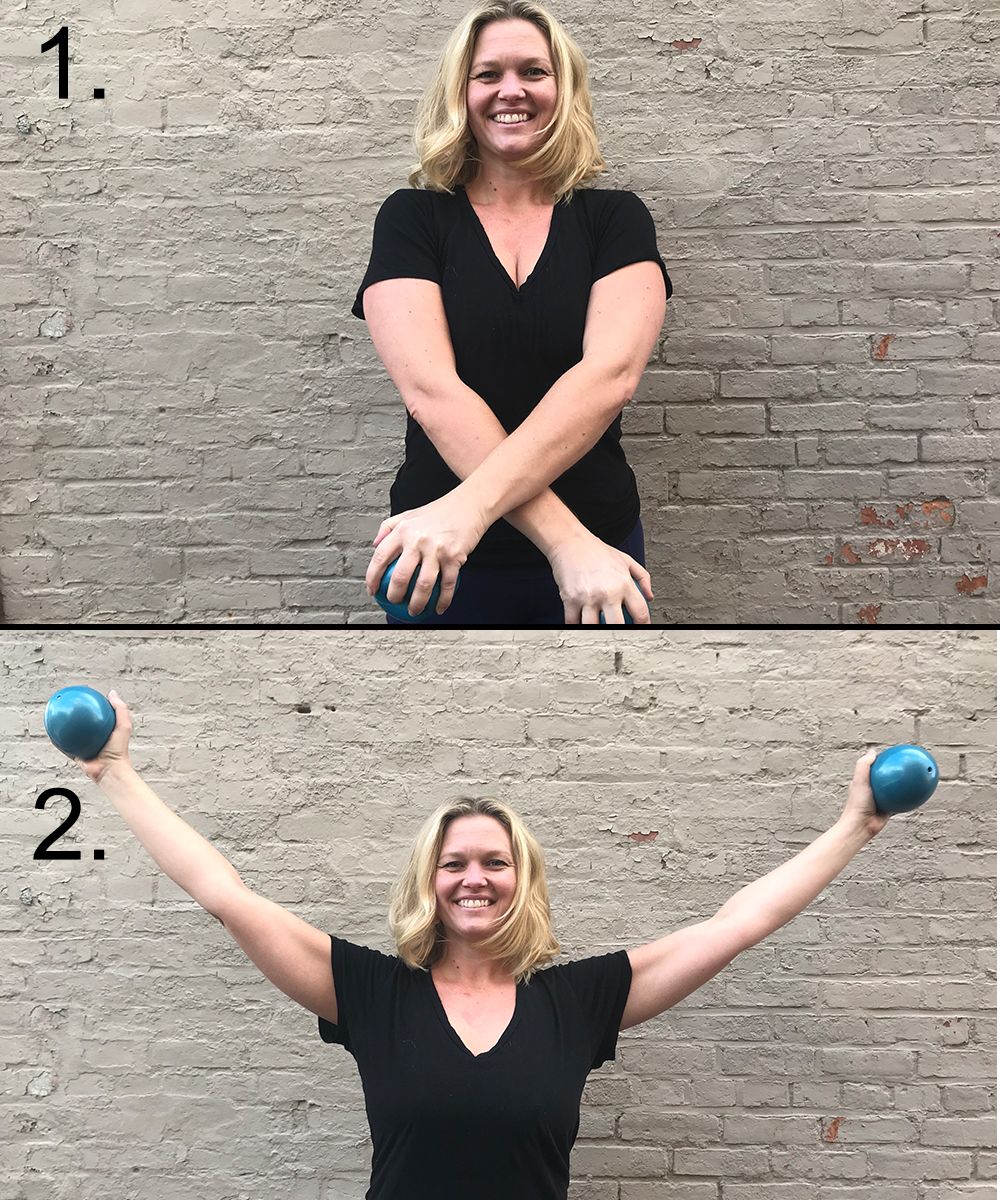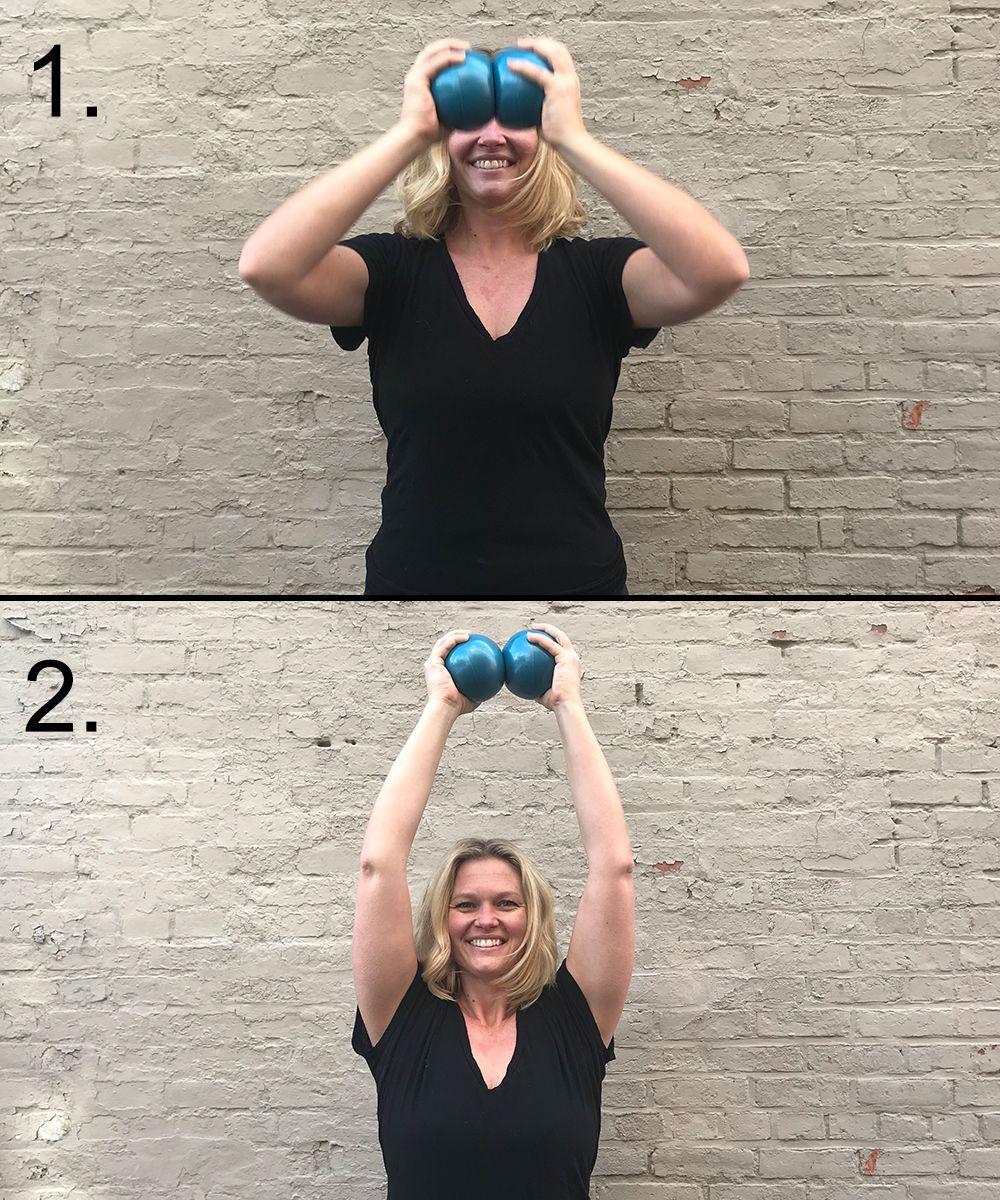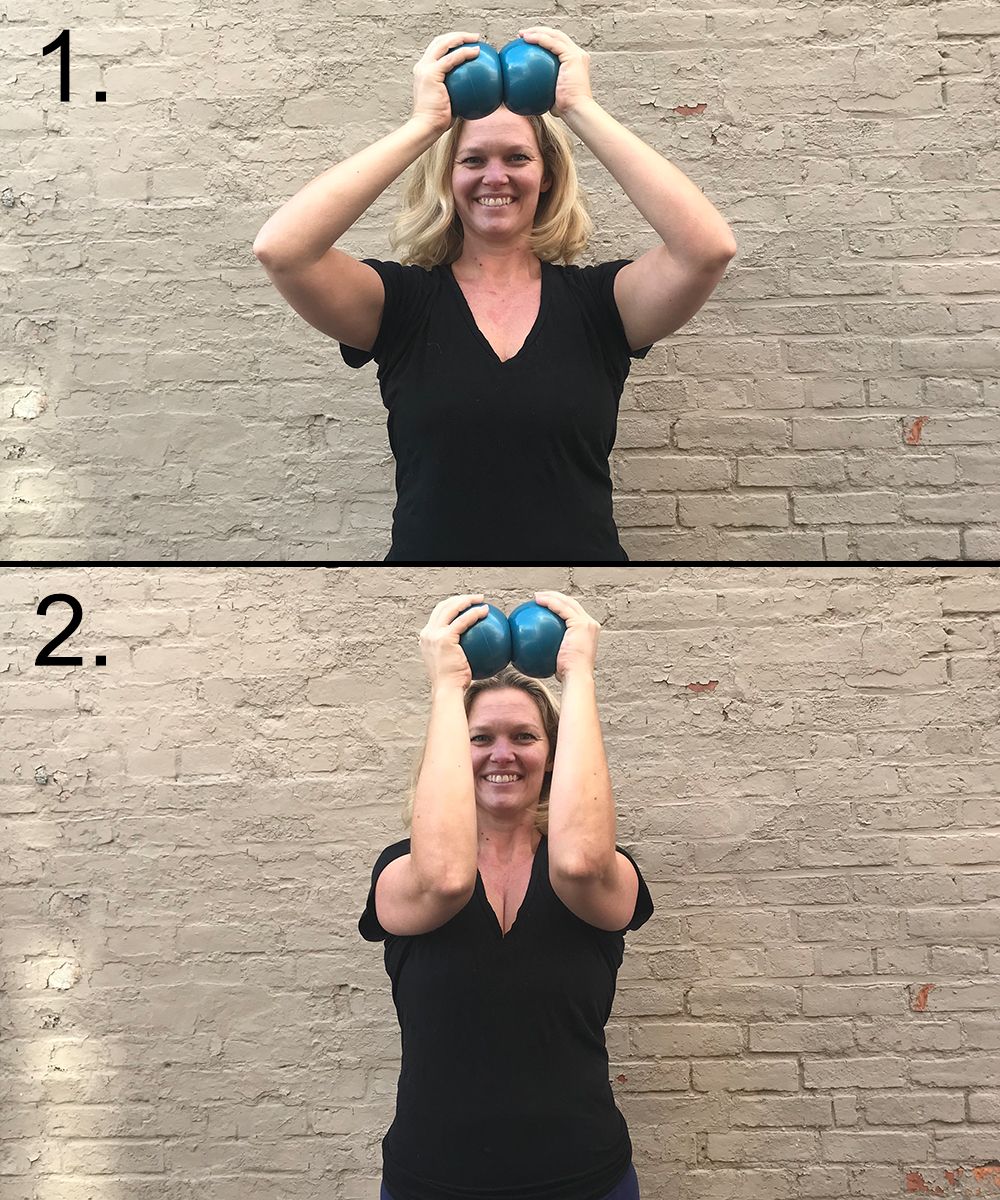Having strong arms means being able to lift more than one bag of groceries at a time, lifting an overflowing hamper to the laundry room, and spotting clients during their workouts.
All of these “things” happen in real life, and we should be able to do these tasks without struggle.
That's where these Pilates arm exercises come in. Pilates is all about incorporating exercises to make everyday life easier and more pain-free. This arm workout may seem like cake, but if done correctly, it can be the most effective thing you do all week. Grab a pair of light weights and perform each exercise for at least 10 reps. If working out both arms at the same time is too much for you right now, start with one arm at a time and work your way to two!
External Rotation with Palm Up

- Start with your elbows tight in at your sides with your palms facing up.
- Externally rotate your arms out to the sides, making sure your elbows don’t come off your ribs.
- Bring your arms back in to the start position, making sure your hands and arms stay shoulder-distance apart.
Pulling a Sword

- Start with your arms crossed in front of you and at hip height, elbows slightly bent and shoulders back.
- Reach the arms up and out to the sides, almost forming an “X” position. Make sure to keep the shoulders back and down.
- Bring the arms back to start position without letting the hands rest on top of each other.
Steeple

- Press your weights together in front of you with your elbows up and out to the sides.
- Resist the arms up above your head without lifting the shoulders or hunching forward, and pressing the weights together the whole time.
- Bring the arms back down to your start position, and don’t drop the elbows.
Butterfly

- Start in the same position as Steeple with your elbows out to the sides.
- Squeeze your elbows in together, and know that it's OK if they don't meet.
- Wing your elbows back out to the start position, making sure they don't go higher than the shoulders.









